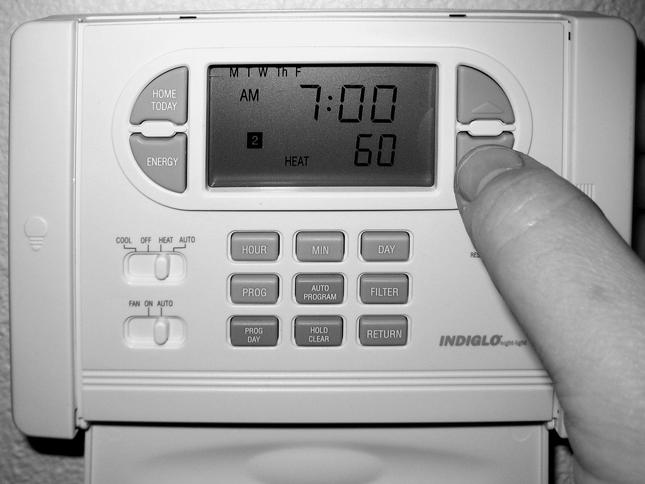For D.C. residents wilting in 90-plus-degree days, stepping out of the heat can be a welcome relief. But chilly stores and restaurants are bringing winter back at great harm to our budget, bodies, and planet. Crank up your thermostats, Washingtonians, and rack up these benefits:
#1 An Accidental Bikini-Ready Bod — Georgetown saleswoman Durban Clarke is on an unintentional diet. “Normally I have a big ol’ sandwich for lunch,” she sighs languidly, withering in an 84-degree store with broken air conditioning. “Today I could barely finish a pear.” Not surprising: eating less and lighter is typical when hot. That’s useful information for locals trying to shed a few pounds before lounging in swimwear as well as others aiming to drop more. And the evidence is beyond anecdotal. A study in a 2006 International Journal of Obesity cites air conditioning as an important, often overlooked contributor to the nationwide obesity epidemic. It’s time for Washingtonians to warm up — and slim down.
#2 Eliminating the Implicit Instruction: “Bring a Jacket, It’s 95 Degrees” —
Many workers must dress both for inside temperatures in the 60s or low 70s and sweltering outside air or suffer the consequences. For one Georgetown worker keeping warm starts at her core. “I wear a padded bra every day to work,” she confesses. But avoiding frequent battles over thermostat settings with her male coworkers requires even more — her chair holds a jacket and a sweater while her desk hides a space heater. Numerous other locals use their props in winter and summer with little basis. Four of five people around the world are comfortable between from about 76 and 89 degrees at a 92-degree outdoor temperature, according to analysis in the air conditioning book “Losing Our Cool” by Stan Cox.
#3 “It’s How Much?” (or Avoiding Statement Shock) —
It took the last seven summers to bring two 100-degree days but the mercury’s already reached 100 three times this year. And June featured more than twice the usual count of 90-degree days. The soaring heat is sending electricity bills skyward. Boosting the thermostat can keep them in check. Pepco recommends setting air conditioning to 78 degrees and using energy-efficient fans. “Every degree you raise your thermostat can result in a 5 percent savings on the cost of cooling your home,” says Clay Anderson, spokesman for the electric company which serves more than 750,000 Maryland and D.C. residents.
#4 Conserving Energy: It’s In Again — Conservation may not be as hip as it was in 1979 when solar panels topped the White House and jumpsuit-clad residents pored over electric bills. But the reasons to cut back are just as compelling. Local provider Pepco’s fuel mix relies much more on carbon-emitting sources (three-quarters overall, including 40 percent coal) than carbon-free (about one-quarter nuclear and renewables). And using carbon-producing energy can contribute to a nasty cycle where greater greenhouse gas emissions bring warmer temperatures which prompt more a/c use. Turning down the thermostat — particularly during hot daytime hours — can also help avoid electrical equipment failures. Make it warmer to shrink carbon footprints and lessen grid stress.
#5 (No More) “You’re Hot Then You’re Cold” —
So sings a furious Katy Perry afraid of being jilted at the altar. Frequent temperature hiccups might be easier on the emotions but they’re uncomfortable physically. In fact, a year after central air conditioning was installed in the U.S. Capitol, Rep. John Rankin rose to complain that the 15 to 20 degree temperature differential was too much. “This is a regular Republican atmosphere,” said the Mississippi Democrat, “and it’s enough to kill anyone if it continues.” In fact, surrounding temperatures rarely varied by 30-plus degrees until this century, and many signs show we aren’t made to duck in and out of cold spaces. The quick switch stresses out bodies that have to adjust their internal thermostat, which can bring on headaches and chills and lower immunity to colds.
Of course, the usual cautions apply. Stay hydrated. Be alert for symptoms that might indicate heat illness, particularly in vulnerable populations like seniors and children. But generally, boost those temps as an act of consideration for your coworkers and clients, and for people everywhere.


